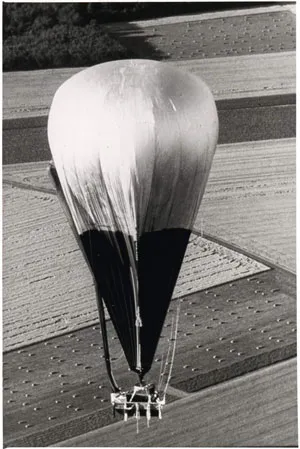A Brief History of Trans-Atlantic Balloon Crossings
Fifteenth time’s the charm, evidently
/https://tf-cmsv2-smithsonianmag-media.s3.amazonaws.com/filer/04/80/04804c3c-49d2-435e-97e6-653537ab0710/hot-air-balloon.jpg)
They had lofty goals–and those goals paid off.
On August 11, 1978, a group of three adventurers became the first people to ever cross the Atlantic in a balloon. Ben Abruzzo, Maxie Anderson and Larry Newman were aloft in a helium balloon named Double Eagle II for 137 hours of flight time, according to PBS. It was the first balloon record in 17 years, PBS writes, and the previous one was for altitude.
Given that hot air balloons were developed in the late 1700s, it might be surprising that it took so long to fly over an ocean. But there were 14 failed trans-Atlantic missions before Abruzzo, Anderson and Newman finally made the successful crossing.
“Talk of flying across the Atlantic began soon after man’s first free [i.e. untethered] balloon flights in 1783 in France–although the longest of these covered only three miles,” wrote Popular Mechanics in 1975. Writing to a French friend in 1784, the magazine records, George Washington said that “... our friends at Paris, in a little time, will come flying thro’ the air, instead of ploughing the ocean, to get to America.” But airplanes made the trans-Atlantic voyage long before balloons did.
Charles Green, who became famous in 1836 for piloting the Great Nassau balloon in an historic flight, was the first to talk seriously about doing the trip. That same year, records author Harold Beaver, Green started talking about a trans-Atlantic flight. “He had even built a model of an Atlantic Balloon, making trial runs in 1840,” Green writes. “It was operated by clockwork-driven propellers and had a rudder." Green never made the attempt, but his ideas caught the eye of Edgar Allan Poe, who authored a hoax about a successful crossing in 1844–and actually fooled The New York Sun.
Between a first attempt in 1859 and the end of the 1800s, seven attempts to create a seaworthy balloon were made, involving balloons with names ranging from the simple (Atlantic) to the fantastic (Great Western) to the corporate-sponsored (Daily Graphic). The last to make the attempt was The Great Northwest in 1881, writes Popular Mechanics. None of them made it, though there were relatively few fatalities considering the risk involved.
Nobody made an attempt on the trip between 1881 and 1958. “In the 18th and 19th centuries, balloons were used more for military surveillance and scientific study than for transport or sport,” writes History.com. It wasn’t until the 20th century that an “interest in sport ballooning began to grow,” the website writes. “The trans-Atlantic flight, first accomplished by aircraft and dirigible in 1919, remained an elusive goal of elite balloonists.”

By the time that the trio made the first successful flight, another seven attempts had been made, bringing the total of unsuccessful crossings to 14, according to Keith Barry for Wired. Everything from wind conditions to equipment failure to thunderstorms had gotten in the way of prospective balloonists. But Abruzzo, Anderson and Newman had a relatively peaceful flight, eating hot dogs and canned sardines during their 137 hours in the air. They ended their voyage in France, where they were “greeted by family members and jubilant French spectators who followed their balloon by car,” writes History.com.
Almost a decade later, Richard Branson (yes, that Richard Branson) and Swedish adventurer Per Lindstrand would become the first people to cross the Atlantic in a hot-air balloon, rather than the helium balloon that set the record in '78. Of course, ballooning is now a recreational activity, and it’s unlikely that the steampunk future of trans-Atlantic diplomatic balloons Washington was envisioning will ever come to pass.